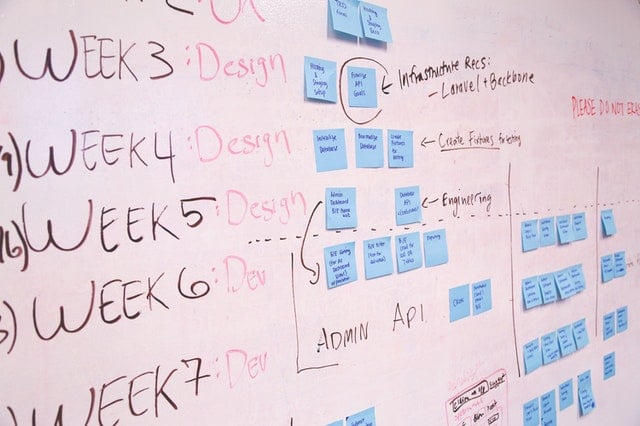Process Documentation: How to Streamline Your Organization & Save Hundreds of Thousands in Labor Costs
January 27, 2023
Delivering a completed product or service to a client — one that will be well-received, meets client requirements, is on schedule, and within budget — is crucial to a successful relationship with your client.
To meet these customer needs, your business practices should foster internal efficiencies within your project teams to ensure smoothly functioning team operations and a profitable project outcome.
But what if there were ways to optimize your business processes even further, to discover and eliminate inefficiencies you were unaware of, resulting in savings of hundreds of thousands of dollars in labor costs?
Times have changed. Old paradigms might not work anymore.
“The COVID-19 pandemic has forced organizations and employees worldwide to drastically rethink their way of working.” — The Journal of Corporate Transformation
According to the Project Management Institute (PMI), the changing nature of work due to technological advances, globalization, and other factors means that, increasingly, work is organized around projects with teams being brought together based on the skills needed for specific tasks.
McKinsey & Company reports that, because of the lingering effects of the pandemic, each sector, industry, and function will have to reinvent itself to achieve maximum growth and sustainability.
More recently, The Journal of Corporate Transformation reports “the COVID-19 pandemic has forced organizations and employees worldwide to drastically rethink their way of working.”
For these and many other reasons, it has become more crucial than ever that company leadership and all the various groups within a business understand the basic elements of their project workflows and communications processes.
What is process documentation?
“Projects are the driving force behind how work is done, change is realized and value is delivered.”—Project Management Institute
Your internal business processes — how you manage your business, execute tasks, and communicate among project team members and with clients — are essential to the efficient workflow and profitability of your business.
Process documentation is a detailed description of each step taken by each stakeholder needed to execute a project, from the beginning to the end.
Process documentation can take many forms — whether written in prose, flowcharted, or a combination of both — and contains enough detail that anyone can understand the steps taken and the interactions and/or handoffs needed.
A business depends on their internal processes for day-to-day survival, and project teams use them to optimize their activities for quality control and cost/schedule management.

In order to optimize project processes, they must first be well-understood by all stakeholders.
Any process can be broken down into individual steps, showing inputs and interactions between and among the stakeholders.
Identifying and writing down each step in your processes and the connections or interactions between those steps will be invaluable in optimizing your processes, saving time and labor costs.
Next, each step is identified and analyzed as to who does what, what inputs are required for each step, what the outputs are, and how handoffs are handled. Then, the entire project can be flowcharted, beginning to end, to provide a clear visual display of how the work will get done and the role of each individual involved in it.
A simple generic example of a process flowchart is shown below.

Why do you need process documentation? What are the benefits of process documentation?
Writing down your processes can lead to a number of benefits:
- Inefficiencies are exposed that allow for process optimization. This in turn allows your company to stop paying employees to manage inefficient processes and instead pay them to create, innovate, and solve “long-shelved issues.”
- Inputs, handoffs, review points, other interactions among team members, managers, and clients are identified and analyzed.
- Awkward or inefficient internal or group-to-group hand-offs of information or work products are exposed.
- Each individual’s role in performing tasks is clarified.
- Process documentation can be used as training tools when bringing on new team members or new hires.
- Most important, streamlined and optimized processes lead to a more streamlined organization with reduced labor costs, improved client relationships, and greater profitability.
How to Document Your Processes
Before you can optimize your processes, first you will need to define, describe, and document them. The best way to do this is to assemble all the team members and stakeholders around a whiteboard and conduct a process workshop.
This initial brainstorming session can lead to a clearer, more detailed understanding of each of the stakeholder and team member roles, the interactions among team members, and the handoffs among the team, management, and clients.
For teams that have never developed process documentation, it would be helpful to hire a writing agency with an experienced facilitator to lead the workshop and document its results.
7 Critical Tasks Your Process Documentation Workshop Will Complete
In the initial brainstorming session, conducted with the full project team gathered around a whiteboard, this is the general sequence of events. The team will:
- Brainstorm every step in the process, all handoffs, interactions, and communication pathways
- Identify start and end points of each process (process boundaries, project scope)
- Identify outputs (requirements and expectations met, deliverables)
- Identify inputs (requirements, data, schedule, budget, other documentation)
- Identify control points (reviews, approvals)
- Organize steps sequentially
- Identify individual stakeholder/team member tasks and responsibilities
- Discover “holes” or duplications
How Writing Down Your Processes Can Expose Inefficiencies and Allow for Process Optimization
As the team members work together to identify and write down their roles, handoffs, and communication pathways in a project, several things can happen:
- Inefficiencies can be exposed. For example, one team member may have past experience related to another member’s current effort and can share alternative, or more efficient, ways to accomplish that task.
- Duplicate efforts may come to light. What a wonderful surprise to discover that two people are doing essentially the same work! That task can then be assigned to a single person and the other team member can focus on other tasks.
- When a project’s tasks are flowcharted, the resulting visual aid may expose potential shortcuts, particularly in review/approval checkpoints, and duplicated efforts.
- An analysis of how individual processes interact with each other can uncover holes or cracks in those processes. For example, handoffs from manufacturing to sales, or communications with clients, or hiring to onboarding all have the potential to be improved, and then optimized, saving time and money.
- Your process documentation will serve as a roadmap for executing the project and providing a product that meets or exceeds your client’s expectations
If your business process involves periodic communication or reviews with your client, it can be helpful for the client to have insight into your processes or, even better, be included in the overall process diagram.
When team processes are shared with clients, even more inefficiencies can be discovered, leading to smoother, streamlined operations, and saving more time and money.
But even more important, especially for your overall business, streamlining your processes can lead to enormous savings in labor costs.

For example, for a 100-employee company, where employees are paid an average of $20/hour, saving 5% of their time (2 hours/week) leads to a $200,000 cost savings each year!
Furthermore, when employees aren’t spinning their wheels trying to manage inefficient processes, there will be more time and energy for creativity and innovation.
We’re too busy to document our processes! Is it possible to hire a writing agency to help?
On top of everything else a project team must accomplish on a tight schedule and limited budget, project team members might not feel they have the time to devote to discovering, analyzing, and documenting their processes. Also, not all professionals or organizations have the skills, experience, and know-how to develop their own process documentation.
That is where a writing agency can step in. A writing agency can tackle the heavy lifting, allowing the task team to get on with the work at hand. Professional writing agencies have the writers, researchers, and expertise needed to develop top-notch process documentation.
If you hire a writing agency to facilitate discovery of the process elements and prepare the process documentation, they will facilitate the team’s initial brainstorming of project steps, inputs, outputs, interactions, and individual responsibilities within a given task.
Then, the writing agency builds the process flowchart and generates the final process documentation report.
For example, The Writers for Hire (TWFH) is currently working with a small utility company to document their processes. The company was founded nearly 100 years ago, with a workforce more like a family than a structured business, and over time not much was written down.
With recent mergers and acquisitions fueling growth, this lack of documentation had become a big problem. Where one department believed they were doing good work, another department wondered why others were not meeting their requirements.
With the help of an experienced facilitator, when their processes were mapped on a whiteboard — handoffs, review points, and communication pathways — process inefficiencies, gaps, and duplications became obvious.
Based on these helpful process maps, TWFH conducted a gap analysis on their existing documents and is currently preparing the final set of process documentation.
Final Thoughts
Documenting your internal business processes can lead to significant cost savings, happier clients, and a less stressful, more efficient work environment for team members.
But for many businesses, this task may seem daunting, especially for teams already fully occupied with producing results for clients. The best way to generate process documentation may be to hire a writing agency to facilitate the discovery, analysis, optimization, and flowcharting of your projects’ processes.
From young start-up businesses to well-established companies, talented employees put forth their best efforts to please customers. Their project managers have a challenge similar to an orchestra conductor, i.e., making sure all aspects of the project are fine-tuned and perfectly timed.
Without current process documentation, as is the case with many companies — old and new — inefficiencies, gaps, and overlaps can lead to frustration and excessive labor costs that may not be apparent to management.
Especially for some older companies, for example: In the transition from paper files to cloud storage, from new tech to newer tech, keeping up with documenting new ways of doing business may not have been top priority. This is not unusual, especially when serving the client has been the major focus.
As businesses grow, especially through acquisitions or mergers, new processes will need to be developed and documented, usually from scratch. Especially in these cases, it’s very helpful to hire a writing agency to help sort it all out.
To learn more, please refer to this article’s sister post “How Can a Writing Agency Work With SMEs to Develop SOPs?”.































